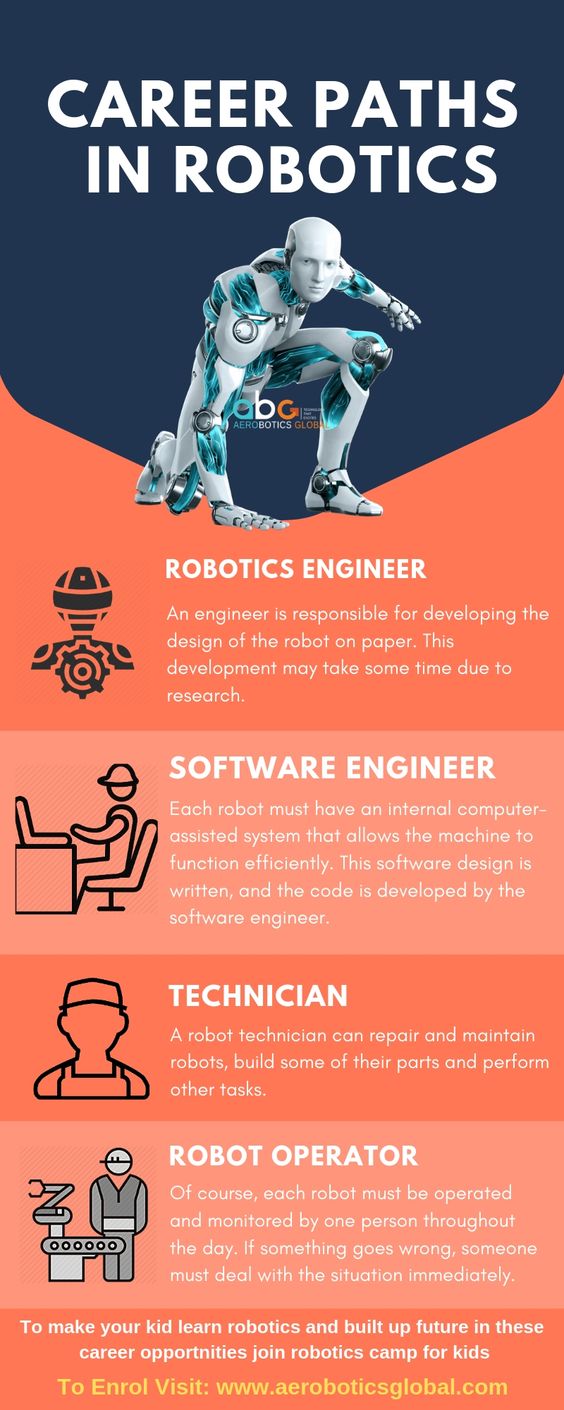As the field of robotics continues to grow and evolve, the demand for Robotics Engineers is increasing. Robotics Engineers are responsible for designing, building, and testing robots that can perform a variety of tasks in different settings. Here’s a roadmap to help you become a Robotics Engineer:
1 Learn Programming Fundamentals:
Programming is the foundation of robotics. You should have a good understanding of at least one programming language such as C++, Python, or MATLAB. You should be able to write and debug code and understand algorithms.
Before diving into the specifics of web development, it’s essential to learn the fundamentals of programming. Familiarize yourself with basic programming concepts such as variables, data types, control structures, functions, and object-oriented programming. In Coursaya, we offer plenty of courses covering nearly every possible field.
We recommend the following courses:
Why we chose C and Java?
If you’re planning to become a software engineer, It’s best to use C (including C# and C++) or Java. Yes you can learn programming in different languages. But these allow you to learn the programming fundamentals. In your professional career, you might not work with these languages. But the thing is, during the process of learning, you will learn different Programming Languages along the way. As mentioned, these provide a very good step that will help you build important fundamentals.
But keep in mind, you can start with any programming language of your selection, Ruby, Python, C++. It makes no great difference by the end of the day.
Data Structures: Data structures are ways of organizing and storing data. They include arrays, linked lists, stacks, queues, trees, and graphs. Understanding data structures is important because they can help you efficiently manage large amounts of data and perform complex operations.
We recommend the following FREE courses:
Algorithms: Algorithms are a set of instructions that solve a particular problem or perform a specific task. They include search algorithms, sorting algorithms, graph algorithms, and many others. Understanding algorithms is important because it can help you solve problems efficiently and optimize your code.
We recommend the following courses:
-
Algorithms for Searching, Sorting, and Indexing
-
Greedy Algorithms, Minimum Spanning Trees
-
Analysis of Algorithms
-
Advanced Algorithms and Complexity
Object-Oriented Programming: Object-oriented programming (OOP) is a programming paradigm that emphasizes the use of objects to model real-world concepts. OOP includes concepts like classes, objects, encapsulation, inheritance, and polymorphism. Understanding OOP is important because it allows you to write more modular, reusable, and maintainable code.
:We Recommend the following FREE courses
-
Object-Oriented Programming Concepts
-
Introduction to Java and Object-Oriented
-
Intermediate Object-Oriented Programming with
To learn programming fundamentals, you can start with an introductory programming course or tutorial in a language of your choice. Some popular languages for beginners include Python, Java, and Ruby. Once you have a basic understanding of programming concepts, you can start learning about data structures, algorithms, and object-oriented programming.
There are many online resources available to help you learn programming fundamentals, including online courses, tutorials, and books. It’s also important to practice writing code on your own to reinforce your understanding of programming concepts and build your coding skills. As you gain more experience, you can start exploring more advanced topics like software design patterns, multithreading, and network programming.
2 Learn Mathematics and Physics:
Robotics requires a solid foundation in mathematics and physics. You should have a good understanding of linear algebra, calculus, mechanics, and dynamics. This will help you design and control the movement of robots.
We Recommend the following FREE Courses:
Control physics with C# in Unity
Mathematics for Engineers: The Capstone Course
3 Learn Robotics Systems:
To become a Robotics Engineer, you should have a good understanding of robotics systems. This includes robot kinematics and dynamics, sensors, actuators, and control systems. You should also be familiar with popular robotics platforms such as ROS, Gazebo, and V-REP.
We Recommend the following FREE Courses:
Modern Robotics, Course 1: Foundations of Robot Motion
Modern Robotics, Course 2: Robot Kinematics
Modern Robotics, Course 3: Robot Dynamics
4 Learn Robotics Perception:
Robotics perception involves the use of sensors and algorithms to perceive and understand the environment around the robot. You should learn how to use sensors such as cameras, LIDAR, and IMU, and algorithms such as SLAM and object detection to build perception systems for robots.
5 Learn Robotics Planning and Control:
Robotics planning and control involves designing algorithms that enable robots to make decisions and move in an environment. You should learn how to design and implement motion planning algorithms, trajectory planning algorithms, and control algorithms for robots.
Modern Robotics, Course 4: Robot Motion Planning
Modern Robotics, Course 5: Robot Manipulation
6 Learn Robotics Software Development:
Robotics software development involves writing and maintaining software that controls robots. You should learn how to write modular, reusable, and scalable software for robotics applications. You should also be familiar with software engineering tools such as version control, testing frameworks, and build systems.
Modern Robotics, Course 6: Capstone Project
7 Learn Robotics Applications:
Robotics applications involve the use of robots to perform different tasks in different domains such as manufacturing, healthcare, and transportation. You should learn how to identify and analyze the requirements of different robotics applications and design and implement solutions that meet those requirements.
8 Obtain Certifications:
Certifications can help you demonstrate your skills and knowledge to potential employers. Some popular certifications for Robotics Engineers include the Robotics Software Engineer Nanodegree, the ROS Certification Exam, and the Certified Robot Integration Professional (CRIP) Certification.


